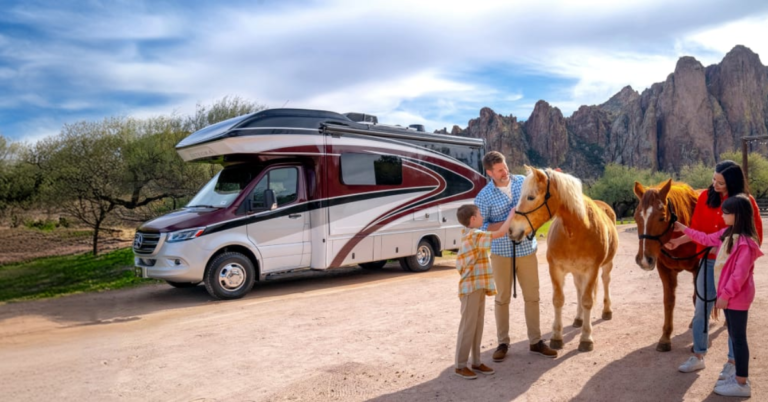Preparing for the Ultimate Adventure: Essential Gear for the Everest Base Camp Trek

Preparing for the Everest Base Camp trek requires careful consideration of essential gear to ensure safety, comfort, and enjoyment amidst the challenging Himalayan environment. Here’s a comprehensive guide to the must-have gear:
Embarking on the Everest Base Camp trek demands thorough preparation, especially when it comes to selecting the right gear. The journey through the Himalayas involves navigating rugged terrain, fluctuating weather conditions, and high altitudes, making adequate equipment crucial for both safety and comfort.
Footwear: Sturdy trekking boots with ankle support are essential to handle rocky trails and provide stability on uneven terrain. Break them in before the trek to avoid blisters.
Layered Clothing: The Everest region experiences varying temperatures throughout the day. Pack moisture-wicking base layers, insulating mid-layers (fleece or down jackets), and a waterproof outer shell to combat cold and precipitation.
Comfortable Backpack: A well-fitted backpack (35-50 liters) is ideal for carrying essentials like water, snacks, extra layers, and camera gear. Look for padded straps and a hip belt for comfort during long hikes.
Sleeping Bag: Choose a lightweight sleeping bag rated for sub-zero temperatures to stay warm in mountain lodges and tea houses along the trekking route.
First Aid Kit: Include essentials like altitude sickness medication (e.g., Diamox), pain relievers, bandages, and blister treatment. Consult a healthcare professional for personalized advice.
Water Bottle and Water Purification: Stay hydrated with a durable water bottle and purification tablets or a filtration system to ensure safe drinking water from local sources.
Snacks and Food Supplies: Pack energy-boosting snacks (e.g., trail mix, energy bars) and consider dietary preferences for meals at tea houses along the route.
Navigation Tools: Carry detailed trekking maps, a compass, and optionally, a GPS device or smartphone with offline maps to navigate the trail effectively.
Headlamp with Extra Batteries: Essential for early morning hikes and navigating tea houses at night where electricity may be limited.
Insulated Jacket: Prepare for cold temperatures at higher altitudes with a warm, insulated jacket that can be layered over your clothing.
Trekking Poles: Provide stability on steep ascents and descents, reducing strain on knees and aiding balance in challenging terrain.
Cash and Identification Documents: Carry sufficient cash (Nepalese Rupees) for expenses along the trek and keep identification documents secure.
Communication Device: Carry a cell phone or satellite messenger for emergency communication and staying connected with loved ones.
Conclusion: Proper preparation with essential gear is key to a safe and enjoyable Everest Base Camp trek. Ensure each item is chosen based on comfort, durability, and suitability for mountain conditions to maximize your adventure in the breathtaking Himalayas.
Introduction: Gearing Up for the Everest Base Camp Trek
Preparing for the Everest Base Camp trek involves meticulous planning and selecting the right gear to ensure comfort and safety amidst the challenging Himalayan terrain. This journey demands resilience and proper equipment to navigate through varying altitudes and weather conditions. From footwear to sleeping essentials, each item plays a crucial role in enhancing the trekking experience. Understanding the essentials and their significance ensures trekkers are well-prepared for this ultimate adventure in one of the world’s most awe-inspiring landscapes.
Choosing the Right Backpack: Pack Essentials for a Successful Trek
Selecting the correct backpack is paramount for the Everest Base Camp trek. Opt for a durable, comfortable pack with a capacity of 35-50 liters to accommodate essentials such as clothing layers, hydration systems, snacks, first aid kit, and camera gear. Look for ergonomic designs with padded shoulder straps, a hip belt for weight distribution, and multiple compartments for organized packing. Waterproofing or rain covers are essential to protect gear from unexpected weather changes. Choosing the right backpack ensures trekkers can carry necessary supplies comfortably throughout the journey, enhancing mobility and readiness for various trekking challenges.
Footwear for the Trail: Selecting the Best Hiking Boots and Socks
Choosing suitable footwear is crucial for navigating the rugged terrain of the Everest Base Camp trek. Opt for high-quality hiking boots that offer ankle support, durability, and traction on rocky paths. Break in new boots before the trek to prevent blisters and discomfort. Select moisture-wicking, breathable socks to keep feet dry and comfortable, reducing the risk of blisters and fungal infections. Consider the climate and terrain conditions when choosing footwear to ensure it meets the trek’s demands. Properly fitted boots and socks enhance trekking efficiency, providing stability and protection for the feet throughout the challenging journey.
Layering Techniques: Clothing Strategies for Varying Climates
Layering clothing is essential for adapting to the diverse climates encountered during the Everest Base Camp trek. Begin with a moisture-wicking base layer to manage perspiration, followed by insulating layers such as fleece or down jackets for warmth. A waterproof and windproof outer shell provides protection against rain, snow, and wind at higher altitudes. Choose clothing made from quick-drying materials to maintain comfort and warmth during variable weather conditions. Adjust layers according to temperature changes and physical activity levels to regulate body heat effectively. Layering strategies optimize comfort and performance, ensuring trekkers remain warm, dry, and comfortable throughout the trek.
Sleeping Essentials: Insulation, Sleeping Bags, and Sleep Systems
Quality sleep is crucial for physical recovery and energy restoration during the Everest Base Camp trekking. Invest in a lightweight, insulated sleeping bag designed for sub-zero temperatures to stay warm in mountain lodges and tea houses. Consider additional insulation pads or inflatable mattresses for comfort and insulation from cold surfaces. Choose sleeping systems that pack compactly and are suitable for mountain environments. Ensure sleeping gear is lightweight yet provides adequate warmth and comfort for restful nights at varying altitudes. Proper sleep essentials contribute to overall trekking enjoyment and readiness for daily challenges in the Himalayan wilderness.
Essential First Aid Kit: Medications, Bandages, and Health Supplies
A well-prepared first aid kit is indispensable for the Everest Base Camp trek, providing essential supplies for treating minor injuries and managing health concerns in remote mountain environments. Include medications such as pain relievers, anti-diarrheal drugs, and altitude sickness prevention (e.g., Diamox). Pack adhesive bandages, gauze pads, and medical tape for wound care, along with antiseptic wipes and hand sanitizer for hygiene. Consider including a thermometer, tweezers, and a compact CPR mask for emergency situations. Customize the kit based on personal medical needs and consult with a healthcare professional for specific recommendations. A comprehensive first aid kit enhances safety and preparedness, ensuring trekkers can manage common health issues and minor injuries effectively during the trek.
Navigation Tools: Maps, Compass, and GPS Devices for Trekking
Navigational tools are essential for navigating the challenging terrain of the Everest Base Camp trek. Pack detailed topographic maps of the region, highlighting key landmarks, trails, and elevation profiles. A reliable compass aids in orientation, providing direction in case of GPS device failure or battery depletion. Consider carrying a handheld GPS device or smartphone with GPS capabilities and offline maps for precise navigation and route tracking. Familiarize yourself with using these tools before the trek to enhance navigation efficiency. Navigational tools provide confidence and security, enabling trekkers to navigate safely and explore the Himalayan wilderness with ease.
Hydration Systems: Water Bottles, Filters, and Hydration Packs
Staying hydrated is paramount during the Everest Base Camp trek to maintain energy levels and prevent altitude-related illnesses. Pack durable water bottles or hydration bladders with a capacity of at least 2-3 liters to ensure an adequate water supply between tea houses and lodges. Consider using water purification tablets or a portable water filter to treat water from natural sources and minimize the risk of waterborne diseases. Hydration packs offer hands-free access to water while trekking, enhancing convenience and hydration efficiency. Monitor water intake regularly and refill supplies at designated points to stay hydrated throughout the trek. Proper hydration systems support trekking performance and overall well-being in the high-altitude environment of the Himalayas.
Nutrition and Snacks: Energy-Boosting Foods for Sustained Trekking
Nutrition plays a vital role in maintaining energy levels and endurance during the Everest Base Camp trek. Pack lightweight, energy-dense snacks such as trail mix, energy bars, nuts, and dried fruits to fuel trekking activities and replenish calories expended. Include high-carbohydrate snacks for quick energy boosts and protein-rich options for muscle recovery. Consider dietary preferences and allergies when selecting snacks to ensure suitability for individual needs. Plan regular snack breaks to refuel and hydrate, optimizing performance and stamina throughout the trek. Nutritionally balanced snacks support sustained trekking efforts and enhance overall trekking experience in the challenging Himalayan terrain.
Headgear and Eyewear: Hats, Sunglasses, and Sun Protection
Protecting yourself from the intense Himalayan sun is essential for comfort and safety during the Everest Base Camp trek. Pack a wide-brimmed hat or cap to shield your face and neck from direct sunlight, reducing the risk of sunburn and heat exhaustion. UV-blocking sunglasses with polarized lenses protect eyes from glare and harmful UV rays at high altitudes. Apply a broad-spectrum sunscreen with a high SPF rating to exposed skin, including lips, and reapply regularly throughout the day. Consider wearing a lightweight neck gaiter or buff for additional sun protection and warmth. Proper headgear and eyewear minimize sun-related discomfort and reduce the risk of sunburn and eye strain during trekking activities in the Himalayan wilderness.
Hand Protection: Gloves and Mittens for Cold Weather Conditions
Hand protection is crucial during the 12 Day Everest Base Camp trek, especially in cold weather conditions encountered at higher altitudes. Choose insulated gloves or mittens made from waterproof and windproof materials to maintain warmth and dexterity. Insulated gloves provide flexibility for tasks like adjusting gear or taking photographs, while mittens offer superior warmth for extended exposure to cold temperatures. Consider gloves with touchscreen-compatible fingertips for using smartphones or GPS devices without exposing hands to the elements. Pack lightweight liner gloves for added warmth or use in milder conditions. Proper hand protection enhances comfort and prevents frostbite or cold-related injuries during the trek, ensuring hands remain functional and warm in challenging mountain environments.
Trekking Poles: Benefits and Techniques for Improved Stability
Trekking poles are invaluable tools for enhancing stability, balance, and reducing strain on joints during the Everest Base Camp trek. Adjustable trekking poles allow customization of length to accommodate varying terrain and personal preferences. Benefits include distributing weight evenly, reducing impact on knees and ankles, and providing stability on uneven or slippery surfaces. Utilize trekking poles rhythmically with each step to maintain momentum and enhance endurance, particularly on ascents and descents. Techniques such as planting poles firmly and maintaining a natural arm swing optimize efficiency and reduce fatigue during long treks. Compact collapsible poles are convenient for storage when not in use and can be attached to backpacks for easy access. Incorporating trekking poles into your gear enhances trekking performance, reduces strain, and promotes confident exploration of the Himalayan landscape.
Lighting Solutions: Headlamps, Flashlights, and Camp Lanterns
Effective lighting solutions are essential for navigating trails, setting up camp, and ensuring safety during the Everest Base Camp trek. Pack a lightweight, durable headlamp with adjustable brightness settings for hands-free illumination during early morning hikes or evening activities at tea houses. LED headlamps offer long battery life and various beam modes for versatility in different lighting conditions. Carry a compact flashlight as a backup light source for emergencies or additional lighting needs. Consider portable camp lanterns or inflatable solar-powered lanterns for illuminating tents or communal areas at tea houses. Ensure sufficient spare batteries or power banks for extended use of electronic lighting devices. Proper lighting solutions enhance visibility, safety, and convenience during nighttime activities in remote mountain environments, ensuring trekkers can navigate and enjoy the trek comfortably after dark.
Emergency Communication Devices: Satellite Phones and Personal Locators
Emergency communication devices are essential for maintaining contact with rescue services and loved ones during emergencies on the Everest Base Camp trek. Carry a satellite phone with global coverage and pre-programmed emergency numbers for immediate communication in remote areas without cellular service. Personal locator beacons (PLBs) or satellite messengers enable distress signals to be transmitted to emergency response teams, providing GPS coordinates for swift rescue operations. Register emergency contacts and ensure familiarity with device operation and protocols before the trek. Regularly check battery levels and maintain devices in optimal working condition. Emergency communication devices provide peace of mind, enhancing safety and readiness to respond to unforeseen emergencies or evacuation needs in the challenging Himalayan terrain.
Personal Care Items: Toiletries, Sunscreen, and Lip Balm
Personal care items are essential for maintaining hygiene, comfort, and protection from elements during the Everest Base Camp trek. Pack travel-sized toiletries such as biodegradable soap, toothpaste, and toilet paper for use in tea houses or camping facilities along the route. Apply a high SPF sunscreen to exposed skin daily to prevent sunburn and reduce the risk of skin damage at high altitudes. Use a moisturizing lip balm with SPF protection to prevent dryness and chapping in cold, windy conditions. Pack personal hygiene products and medications tailored to individual needs, including insect repellent and blister treatment supplies. Properly dispose of waste and follow Leave No Trace principles to minimize environmental impact. Personal care items enhance comfort and well-being during the trek, ensuring trekkers can maintain health and hygiene in remote mountain settings.
Repair Kits and Tools: Essentials for Trailside Gear Maintenance
Carrying a repair kit and essential tools is crucial for maintaining gear functionality during the Everest Base Camp trek. Include multi-tools with pliers, screwdrivers, and knife blades for on-the-go repairs to equipment, trekking poles, or camping gear. Carry spare parts such as tent pole repair sleeves, duct tape for quick fixes on clothing or gear, and sewing kits for repairing tears or loose seams. Pack nylon cord or paracord for emergency repairs or creating makeshift gear. A portable stove repair kit ensures stove functionality for cooking meals at tea houses or campsites. Regularly inspect gear and perform preventive maintenance to avoid issues on the trail. Properly maintained equipment and timely repairs enhance comfort, safety, and enjoyment throughout the Everest Base Camp trek, ensuring gear reliability in challenging mountain environments.
Insulation Layers: Down Jackets, Fleece, and Thermal Underwear
Insulation layers are essential for regulating body temperature and warmth during the Everest Base Camp trek, where temperatures can fluctuate dramatically. Pack a lightweight down jacket or synthetic insulated jacket for superior warmth-to-weight ratio and compressibility. Fleece jackets or pullovers provide additional insulation under outer layers and can be worn alone in milder conditions. Thermal underwear or base layers made from moisture-wicking materials retain heat and manage perspiration, enhancing comfort during cold mornings or high-altitude nights. Layering allows adjustment to changing weather conditions and physical activity levels. Choose quick-drying materials for insulation layers to maintain comfort and warmth in damp or snowy conditions. Properly layered clothing ensures trekking comfort and performance, allowing trekkers to adapt to varying temperatures and enjoy the Everest Base Camp experience comfortably.
Pack Organization: Stuff Sacks, Compression Bags, and Packing Cubes
Efficient pack organization enhances accessibility, space management, and weather protection for gear during the Everest Base Camp trek. Use waterproof stuff sacks or dry bags to compartmentalize clothing, sleeping bags, and electronics, keeping them dry and organized inside the backpack. Compression bags minimize volume by squeezing down bulky items like insulated jackets or sleeping bags. Packing cubes segregate clothing into categories for easy retrieval and maintain organization throughout the trek. Store frequently used items like snacks, water bottles, and rain gear in outer compartments or side pockets for quick access on the trail. Organize gear based on priority and accessibility to optimize packing efficiency and minimize unpacking time at tea houses or campsites. Pack organization systems improve convenience, reduce stress, and enhance overall trekking enjoyment in the Everest Base Camp wilderness.
Trekking Accessories: Gaiters, Trekking Towels, and Waterproof Gear
Trekking accessories are essential for comfort, protection, and hygiene during the Everest Base Camp trek, enhancing overall trekking experience in challenging mountain terrain. Gaiters protect footwear and lower legs from mud, snow, and debris on rugged trails and provide additional waterproofing. Quick-drying trekking towels are lightweight, compact, and absorbent for personal hygiene and drying gear. Carry waterproof gear such as rain jackets, pants, and pack covers to stay dry during unexpected showers or snowfall at higher altitudes. Waterproof gloves or mittens keep hands warm and dry in wet conditions. Pack lightweight, breathable hats or caps for sun protection and warmth in varying weather conditions. Trekking accessories optimize comfort, protection, and readiness for diverse environmental challenges during the Everest Base Camp trek, ensuring trekkers can explore confidently and enjoy the adventure to its fullest.
Conclusion: Ready to Embark on the Everest Base Camp Adventure
Equipped with essential gear, knowledge, and preparation, you are now ready to embark on the adventure of a lifetime at Everest Base Camp. From navigating rugged trails to experiencing the awe-inspiring Himalayan landscape, each aspect of your journey is enhanced by careful planning and the right equipment. Be sure to review your gear checklist, finalize your packing, and embrace the challenges and rewards that await on this iconic trek. With proper gear and preparation, you can confidently embark on your Everest Base Camp adventure, ready to create unforgettable memories in one of the world’s most breathtaking destinations.




